
Often these are simple conjectures, other times they are theories based on intuitions confirmed by one or more scientific works.
In this article we will try to shed more light on this, given the importance that this aspect plays in the weight loss process and in sports performance.
available is never provided by a single nutrient, but by a mixture of carbohydrates and fats, in percentages and quantities that depend on the activity itself.Proteins, in normal physiological conditions therefore not atypical such as an excessive or total depletion of glycogen from the liver and muscles, do not play an important role in energy production, with the exception of a small amount of muscle branched amino acids - readily replaced during rest.
The ratio, as a percentage, of the consumption of carbohydrates to lipids is inversely proportional (ie the increase of one decreases the other) with respect to the maximum oxygen consumption (measurable in Vo2max) or maximum aerobic power.
With reference to the figure below, it can be seen that the greater the use of oxygen during a physical effort, the greater the consumption of carbohydrates; this is explained by the "respiratory quotient" (QR), ie the relationship between the production of carbon dioxide and the "use of oxygen" (QR = CO2 / O2).
In the case of carbohydrates, the respiratory quotient has a numerical value of 1.00, which means that the quantity of carbon dioxide produced is equal to the quantity of oxygen used.

Biochemistry teaches us that when in glycolysis, as a phenomenon of liberation of energy for an effort, there is no availability of oxygen (therefore an anaerobic test), glucose is transformed into pyruvic acid and consequently into lactic acid.
This leads to the accumulation of lactate, with a consequent reduction in performance capabilities. This situation is observed in short-term and high-intensity specialties such as 100 meters in swimming, 400 meters in athletics or in series of 8-15 repetitions with a duration of 30 to 60 seconds of continuous tension - classic set of muscles to an "intensity equal to 75-80% of 1RM.

With reference to figure 2 it is observed, however, that the lower the oxygen consumption, the greater the use of fats. In the case of lipids, the respiratory quotient has a numerical value of 0.7, therefore the availability of oxygen is higher than carbon dioxide. produced: this implies that during a low intensity effort (eg a walk), since oxygen is available (aerobic exercise), the glucose molecule is reduced to pyruvic acid without the formation of lactic acid.
Pyruvic acid then enters the Krebs cycle, where the oxidation of glucose and fatty acids will be completed.
Paradoxically, the maximum consumption of fat would occur if the aerobic power approached basal values, and since the Vo2max is almost in direct proportion to the heartbeat, heart rates of very few beats per minute should occur. Absurd situation, achievable only in theory. Let us remember that we are talking about "percentages of energy substrates" and not grams.
At this point it seems evident that the carbohydrate and lipid oxidations for energy production must be suitably combined, creating the right proportions as a function of Vo2max.

During the practice of a "sporting activity, as in the case of a subject who is engaged in a run or in any high intensity activity equal to or greater than 75% of the maximum heart rate (which corresponds to more than 60% of the Vo2max ), the main energy sources are carbohydrates and secondly fats, roughly in their respective percentages: carbohydrates 70% ca and fats 30% ca The "protein intervention is negligible in fact the" non-protein respiratory quotient "is defined.
Obviously this ratio will vary according to the Vo2max, in fact if the intensity increases up to 90% of the HRmax the percentages will change: about 85% carbohydrates and about 15% fats.
If instead it decreases up to 50% of the HRmax, the percentages will be: about 40% carbohydrates and about 60% fats as happens in a resting condition.
) which improve the ability to oxidize fatty acids, therefore triglycerides of the adipose tissue, in order to reproduce large amounts of energy for the effort. This is logical, since oxidizing fats produces more calories than carbohydrates, and their fat reserves are much more abundant than glycogen.This is true, however, especially for those athletes of aerobic activity with medium-low intensity and very high volume. Not for nothing, those who train for "long" competitions (cycling, marathon, triathlon, certain swimming competitions in the sea), must "hit" the right pace to try to oxidize as many fatty acids as possible with respect to glucose, which should be instead spared. We remind you that we are talking about activities lasting even several hours, therefore, accelerating too much you would run out of glycogen in an early manner, completely losing your ability to maintain the effort at the pre-established level.
Despite these adaptations, in medium or medium-high intensity efforts, fats are in fact used in very low percentages, so the direct slimming effect is limited. Normally, in fact, the higher consumption of endurance athletes is dependent on glucose and the immediate result of the effort cannot be weight loss, but a modest reduction in body weight due to the loss of water following the use of carbohydrates. This is because very few people actually train for long races; mostly, they are amateur sportsmen who "corricchiano" 40-60 "3 times a week.
It is important to remember that a carbohydrate molecule is linked to 3 water molecules and this explains the weight loss following the use of this substrate. This is also one of the reasons why, following a low-calorie diet, in the very first weeks there is a considerable reduction in body weight.
However, "calories are always calories". Such indifference, hated by all fitness and nutrition innovators, is still true. The depletion of glycogen reserves leads inexorably to a better commitment of dietary carbohydrates. Normally, after meals a physiological liposynthesis and adipose deposit occurs due to the introduction of energetic macronutrients - whoever thinks he can manage insulin as he wants, is mistaken! However, if we are in conditions of glycogen depletion, dietary carbohydrates will not end up in the liposynthetic pathway, consequently reducing adipose anabolism. The long-term result is effective weight loss, even if obtained indirectly.
We would also know how to specify the aspect of the metabolic orientation. The organism consumes more of the substrate it is used to oxidizing; it is above all a question of cellular enzymes. So, if we eliminate fats from the diet, the body reacts by favoring glucose and vice versa.
The same is true for the training intensity range. By constantly training at high intensity you will have an excellent efficiency in the management of carbohydrates, but lower than lipids; as well as the other way around.
Aerobic activity, therefore, can undoubtedly lead to an immediate drop in body weight, due to the loss of water and modest lipid quantities but, if the intensity of exercise and diet are not properly managed, this condition will be limited and not lasting.
?- Improving general fitness, especially cardiovascular, respiratory and metabolic (reducing pulsations at rest)
- Establishing a considerable and continuous EPOC
- By increasing general musculation, which has an impact on both caloric consumption at rest and on the efficiency of caloric nutrient management
- By controlling the diet, therefore the caloric intake, the overall glycemic load and the intake of dietary fats.
General Fitness
An improvement in general fitness corresponds to the optimization of fatigue capacity; ergo, less effort for greater performance.
We have already said that lipid oxidation is greater in low intensity efforts, identifiable with lower heart rate (HR), hence the need to reduce heartbeats per minute.
This can be achieved through aerobic fitness programs, even at high intensity, which aim at improving cardiovascular, ventilatory and peripheral muscle capacities.
Adaptation to effort leads to a consequent lowering of HR at rest - up to bradycardia in the athlete's heart - and less fatigue.
Excess Postexercise Oxygen Consumption
All "Excess Postexercise Oxygen Consumption (EPOC) corresponds to a transient increase in basal metabolism.
Due to the multitude of processes that are required to restore peripheral and central homeostasis, epoc has several positive consequences on the basal condition. In particular: increase in energy consumption at rest - most of which from fatty acids - and optimization of the metabolic destination of dietary carbohydrates (which will restore glycogen stores).
The epoc is proportional to the "commitment of" training carried out, therefore to the workload. Since the latter is given by volume, intensity and density, the increase of even one of these parameters implies an increase in the EPOC.
Usually however, it is easier to get a high epoch from high intensity work, as low intensity would result in very high volumes - up to "depletion of muscle glycogen stores (> 60-90"). On muscle work, it is customary to increase the "metabolic" aspect - which has a greater effect on the epoc - and by slightly decreasing the intensity and increasing the work density.
Musculation
Muscle tissue is the one that "consumes" the most at rest, therefore it is the most responsible for the basal energy depletion.
By increasing the skeletal muscles, the energy of the lipid reserve will be used to support and nourish the muscle itself when the caloric demand is slow but constant.
To try to increase the basic metabolism it is advisable to practice hypertrophic muscle exercises, in order to increase muscle tissue.
Diet
The metabolic orientation of the nutrients taken and the choice of the energy substrates consumed are inexorably influenced by the diet. This is for several reasons:
- The orientation of the nutrients derives from the basic metabolic state. If the organism is over-nourished and is in anabolic conditions (insulin), the acetylCoA accumulated in the cells will eventually give rise to fatty acids to be stored in the adipose tissue. Vice versa , if the organism is hypo-nourished and is in catabolic conditions (glucagon, etc.), the greed of the tissues will optimize the use of the nutrients taken by using carbohydrates to replenish the reserves and fats for energy purposes;
- The orientation of the nutrients is influenced by the general metabolic efficiency, therefore by the caloric amount. If we get used to the organism constantly managing small quantities of energy nutrients in excess of the necessary, it will lose efficiency in converting them into fats and depositing them. It is a real worsening of the ability to save energy, anti-evolutionary, but positive for example for the Obviously the opposite is also true, which is why low-calorie diets should never be prolonged;
The choice of energy substrates derives from their availability; it means that if we "unaccustom" the muscles to consume fats, because we eliminate them from the diet, in the long term we will lose the efficiency of consuming even those of the adipose tissue. The same goes for carbohydrates; removing them from the diet will result in a worsening of the metabolism of the glucose and a "rebound effect" just entered again.

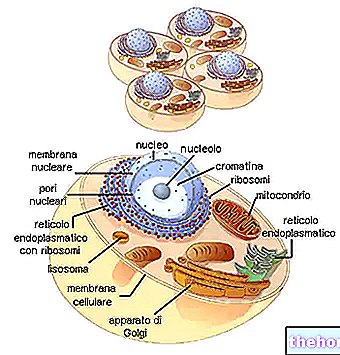
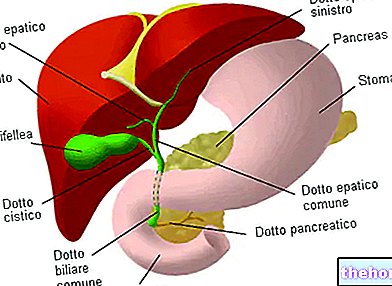
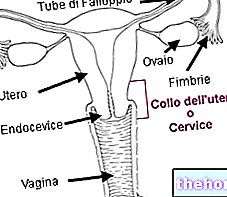
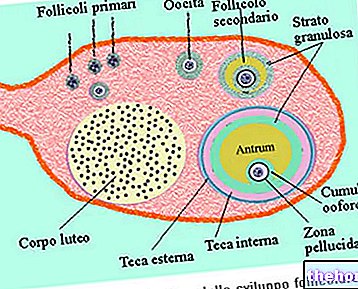

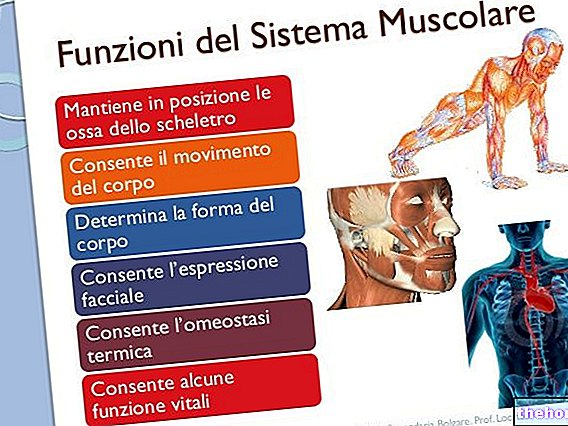









.jpg)











